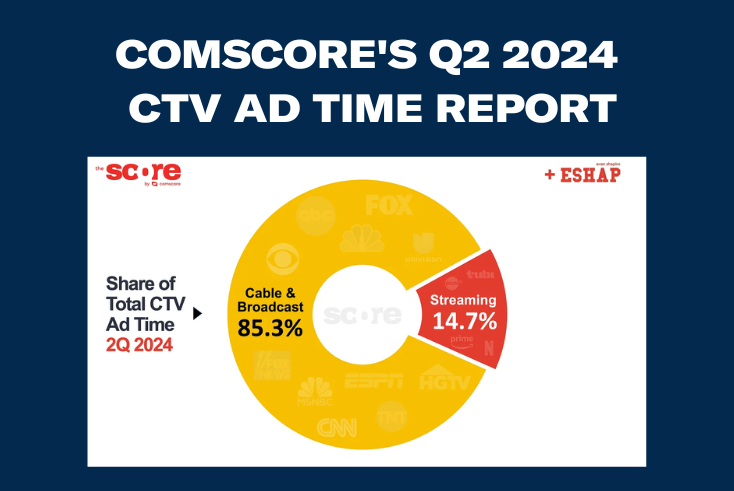Maximizing retail media with first-party data

Retail media has become an increasingly critical component of the digital advertising ecosystem as retailers face stiff competition to grow their market share both in-store and online.
In this interview, The Media Leader speaks with Ken Harlan, Founder and CEO of MobileFuse, an advertising platform specializing in in-app, CTV, and digital out-of-home solutions. Harlan shares how retailers are using first-party data to drive growth and navigate the future of retail media.
The Media Leader: How have you seen retailers evolve their use of first-party data to enhance their media strategies across third-party platforms?
Ken Harlan: Many retailers have effectively maximized the revenue potential of their in-store promotions, website banners, and app ads (anyone can clearly see the saturation of adds on these retailers websites and apps). That said, most retailers have amassed a wealth of consumer data and insights.
With the landscape of digital advertising evolving, there is a growing need to move beyond the confines of these owned channels to maintain growth and relevance. This means reaching customers who might not be actively shopping on their owned channels or in their stores but are still valuable potential buyers. By using data such as purchase history, browsing behavior, and loyalty program insights, retailers are delivering tailored content that resonates with specific customer segments, enhancing engagement and driving conversions.
Engaging these audiences requires a presence on third-party platforms where consumers spend time, especially streaming TV and apps – since this is where consumers spend most of their time. By doing this, retailers are extending their reach and creating additional revenue streams. Additionally, first-party data has become essential in helping retailers retarget users across platforms. For example, retailers can identify users who have abandoned their shopping carts or browsed certain products and retarget them with relevant ads to encourage them to complete their purchases.
The Media Leader: What impact does this have on match rates and overall marketing effectiveness?
Ken Harlan: As some of the supply side of ad inventory is focused on converting publisher first-party data to the same alternative IDs, higher match rates do occur. These higher match rates lead to increased revenue for the retailer and great outcomes for their advertising partners.
The Media Leader: How do privacy regulations impact the way retailers can leverage their first-party data?
Ken Harlan: Privacy regulations have a significant impact on how retailers can leverage their first-party data. By now, most marketers and advertisers are aware of the General Data Protection Regulation (GDPR) in Europe and the California Consumer Privacy Act (CCPA) in the US. These frontrunning regulations note that retailers must obtain explicit, informed consent from consumers before collecting or using personal data. This obviously impacts how first-party data is collected, as retailers need to be transparent about the type of data they’re collecting, how it will be used, and what it is for. Privacy laws also require retailers to provide consumers with the ability to opt-out of data collection or specific uses of their data.
The Media Leader: What strategies are helping them navigate these challenges while maintaining growth?
Ken Harlan: It really comes down to maximizing and optimizing the use of retail brand’s first-party data – the way to do this is to utilize the retailer’s own first-party data. Most retailers have amassed a wealth of consumer data and insights – now is the perfect time to put it to work.
This strategy is particularly impactful, as GDPR, CCPA, and state laws influence how companies collect and use data. The important thing is to utilize a retailer’s owned-assets, their first party data. Without that, most of the strategies would be probabilistic in nature like contextual targeting or lookalike audiences.
To further expand reach beyond owned channels, retailers can partner with third-party companies that have their first-party data converted into alternative id’s like UID2, RampID, and others. As some of the supply side of ad inventory is focused on converting publisher first-party data to the same alternative IDs, the match rates lead to higher ROI.
This enhanced targeting capability enables retailers to reach customers across various digital platforms with highly personalized messages, ultimately leading to stronger results all while maintaining regulatory compliance. Once this is done, retailers can uncover fresh revenue streams. This is particularly useful for when retailers’ apps and websites are fully saturated with ads. Even better, for smaller and mid-sized retailers where there is little site or app traffic to begin with, their first party data can still be used and monetized within the open internet.
The Media Leader: How do the strategies and opportunities differ for smaller retailers compared to large ones?
Ken Harlan: Smaller retailers usually have little to no website or app traffic. Even many well known, large retailers have little digital traffic on their owned apps and websites. So, utilizing first-party data and matching this with non-owned apps and sites (off-network) allows for significant revenue opportunities, just by utilizing the first-party data retailers already own.
A helpful way for smaller retailers to start is by offering something in return for the data, like coupons or discount codes, etc.
The Media Leader: Walmart recently reported significant growth in their advertising business, especially in the U.S. What does this tell us about the current trajectory of retail media and the opportunities for other retailers?
Ken Harlan: Walmart’s significant growth in advertising points to a future where retail media becomes a key player in the digital advertising ecosystem. Actually, a report from Insider Intelligence found that Retail Media is forecasted to be the fastest growing ad channel through 2027, increasing by over 20% year over year. It’s poised to reach $109.40 billion in 2027, up from $59.61 billion in 2024.
All retailers, whether large or small, can seize this opportunity by leveraging their first-party data, expanding their e-commerce platforms, and offering advertisers unique, measurable, and highly targeted opportunities. As the retail media space grows, it presents a lucrative opportunity for retailers to diversify their revenue streams while becoming a central part of the advertising landscape.
The Media Leader: With retail media solutions becoming essential for generating new revenue streams, what trends do you think will shape the future of this space?
Ken Harlan: Retailers must look beyond their owned channels and traditional third-party data strategies to continue growing their reach. By leveraging their first-party data assets and strategically partnering with vetted data partners and SSP’s that also focus on first-party data, retailers can create powerful, privacy-compliant marketing campaigns that deliver on campaign goals. This approach not only ensures continued success in a privacy-centric world, but also builds a foundation for sustainable, customer-focused marketing practices in the future.

À lire plus tard
Vous devez être inscrit pour ajouter cet article à votre liste de lecture
S'inscrire Déjà inscrit ? Connectez-vous









